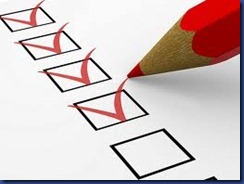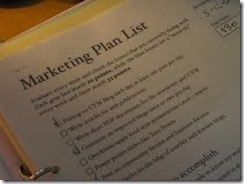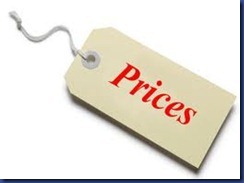 I apologize for the length of today’s blog, but your operations plan takes time and space. (The word “product” refers whatever product or service you plan to sell.)
I apologize for the length of today’s blog, but your operations plan takes time and space. (The word “product” refers whatever product or service you plan to sell.)
The operations plan remains the essential, yet often neglected, section of a business plan. Traditionally, businesses consisted of five major functions: accounting/finance, marketing/sales, information technology, human resource/legal, and operations. The first four were called the support functions. Operations drove the company.
Operations produced, processed, and distributed the product or service. The operations function included locations for factories, distribution outlets, warehouses, and support. Indeed, it could be said that without sales & marketing there could be no profit, but without operations there would be no company. Yet, in too many business plans the operations portion remains the shortest section, because the owner writes the business plan for funding sources and not to guide their business.
Grant’s Story
Grant started his business more than 50 years ago. His operations plan accounted for the longevity and amazing profits of his business. Grant loved genealogy. He received a doctorate in it. Printing his dissertation helped him realize that his community offered few resources for printing and distributing small orders (copiers were not common).
He planned to provide several products around the concept of genealogy. He focused on several diverse and closely related key products and services: publishing people’s family histories, printing dissertations and thesis for college students (to very exacting specifications in those days), duplicating and restoring family photos, preparing and printing forms and tools for a growing society of genealogists. Grant planned to start in his basement and move to a retail location as soon as possible. He decided to always purchase used equipment rather than lease. He would save money by learning how to maintain and service the equipment himself and teach his employees.
He planned that his employees would always be college students that required lower wages and would move on before demanding higher wages. He always bought supplies in bulk (from carefully researched suppliers), maintaining some paper inventories for years, to maximize savings. Grant bought and modified an old car wash as the production and retail location. He built a small apartment into the building and rented apartment space to college student/employees to cover the mortgage. He paid off the mortgage on his facility decades early from the rental income. He offered self-serve copying before copy centers developed. He maintained extensive client records that developed loyalty and repeat business for 20-30 years.
Grant’s meticulous planning for his operation made his business quite profitable. His plan guided the growth of the business for 45 years with only one modification to include a growing wholesale market. Currently, the operation uses off-set printing, small-to-very large black and white and color copiers. Some of his printed genealogical tools still remain bestsellers in the digital age. Almost all employees are college students. To this day, the business maintains no debt. Grant’s operations plan allows his firm to still sell printing/copying at 30-50% less than any competitor.
Outline for Planning Your Operation
A well conceived—and executed—operations plan prevents the business from overwhelms the entrepreneur. The Small Business Administration (which offers wonderful resources and templates to draft your business plan) estimates that a comprehensive operations plan could answer up to 198 questions. We will not explore that many topics, but offer an overview with links to other sources of information.
The operations plan outlines the what, how, where, when, and who of your business.
WHAT
- What exactly is your product? You described your product in the first section of your business in brief and general terms. You add the details, designs, blueprints, specifications, pictures, prototypes in the operations section. Describe whether you will create it from raw materials, purchase it and add-on improvements, or purchase it and pass it through to others as is.
- What materials or elements do you need to prepare your product? Explore all the materials or elements you will produce, which ones you will purchase, and which ones you will outsource. Include a list of materials with quantities in your plan. Outline the copyrights, patents, permissions, or licenses you will need to obtain. Don’t include secret recipes or intellectual property secrets (Think Coca Cola and KFC’s 11 secret herbs and spices).
- What will you need to warehouse or distribute your product? Define whether you will produce your product just-in-time or produce large batches that you will store for future sales. Outline whether you will purchase large quantities of supplies and materials or just what you need. Also, include what equipment you will need to warehouse and ship your product.
- What will it cost to prepare, sell, and distribute your product? Outline the material, equipment, employee, distribution, depreciation, financing, facility, and associated costs in a spreadsheet. Update the spreadsheet at least monthly in your plan. Ask a cost accountant to review it. Incorporate what you find into your finance and costing plan.
- What growth do you forecast in one year, two years, five years? You should set goals for growth and how that growth will impact your business. Increased sales may require greater production than your original plan can provide. On the other hand, you do not want to completely change your production line just as orders explore. Estimating and accounting for growth prevents huge headaches later. Today’s entrepreneur's also have to ask how scalable is my operations plan. They need to research how much explosive growth will impact operations.
HOW
- How will you prepare your product or service? Determine whether you will produce the product internally, outsource it to domestic or international production facilities (sometimes the travel, red tape, and other problems prevent China from being the best solution), or other methods.
- How will you process orders, shipments, and other paperwork? Outline how customer orders get to production, shipping, accounting, and sales. Decide if you will automate the whole process or rely on human interaction. In addition, determine who will purchase product or supplies from vendors. Identify bulk or other discounts and how you will take advantage of them. Establish processes for monitoring employee time, payroll, productivity, efficiency, effectiveness and quality. Design your production floor for optimal manufacturing if that is the case. Create process flowcharts, blueprints, and critical path charts for all major processes.
- How long will it take to produce? Each product takes a certain time to produce: software must be written, tested, and refined; wine requires a certain time to ferment, concrete requires specific time to season. Include how much time a vendor will need to deliver materials or other elements. Failure to plan ahead triggers higher costs for quick delivery. Include tables or GANTT charts in your plan to visually communicate critical paths.
- How will you distribute your product? Explore whether you will use ships, trains, trucks, FedEx, UPS, the US Postal Service, or the Internet to get your product to the purchaser. Define the costs each incur and add your decision to the cost spreadsheet above.
WHEN
- When will your client buy your product? Define what in the life of your client will trigger a purchase. Does the client have certain seasons or reasons to purchase. Outline the seasonal aspects of your product and how you will establish prompts to contact them at that time. Consider days during the week or times during the day they will probably purchase. Identify what you will have to do to be ready for that time. For example, I know of a certain bank manager that sent most tellers to lunch at the same time their clients ate lunch—and did their banking. He didn’t stay manager for long.
- When will you produce the product? Determine whether the inventory cost savings of just-in-time production compensate for making the client wait to receive their order. Some products remain so seasonal that the entire company closes for six months out of each year.
- When do you upgrade or improve your product? Highlight when you should be delivering updates or upgrades to your product. Software can upgrade virtually at any time. Installing an upgrade to your client’s automobile becomes more complicated. Your operations plan should include a table for estimated improvements and refinements to your product. You need to include a version control and roll out plan.
- When do you need to upgrade or replace equipment? Identify the life span of your equipment. Establish plans to both fund the replacements, but also to avoid costly shutdowns at the worst possible times.
WHERE
- Where will you produce the product? Determining where to produce the product requires a lot of research in today’s economy. You will already have explored if you will produce it, buy it, or outsource in the “what” section of your operations plan. Now you need to get to the details of exactly where in the world, your plant, or your home that will be. Economic Development Agencies can help you explore importing and exporting rules, regulations, and options
- Where will the client buy the product? Your operations plan describes the buying experience you will offer your client. You describe whether they will call a phone number, walk into a facility, complete an order on line, or have a representative of your business help them place the order in their office. Contemplate how many times they will have to hear about your product before they buy it. The environment or ambience of the purchase location significantly impacts the buyers experience. Consider the difference between the traveling carnival that stops in your town for a weekend, and going to Disneyland. The experience certainly affects how much the client will pay in those situations.
- Where will you store the product until shipment? So many options for warehousing exist today. You may store your product in cyberspace or on the cloud. You may purchase a warehouse or store it in the garage of your house. You may request your outsourced manufacturer to store it and drop ship it as orders arrive. All of these options require planning, processing, and cash.
- Where will your client receive your product or service? Imagining the location of delivery requires thought. Delivering a 500 pound piece of equipment or furniture to someone’s home requires you to contemplate how they will move it, install it, and dispose of the piece being replaced. Studies prove that placing purchases in nice pastel colored paper bags (with bows) rather than generic plastic bags increase sales at women’s boutiques. Once again, your operation plan describes the clients experience as well as the logistics of buying.
WHO
- Who will prepare your product? Once again, the global economy provides many options. You may use local labor and have to provide the facilities as well as labor costs, but maintain excellent control on production and quality (no lead based toys). You may choose to possibly save money by outsourcing to another country. Many companies use local labor, but avoid recruiting, selecting, and maintaining payroll by contracting with a staffing service to provide their labor. Preparation also includes who will purchase materials, who will process orders, who will load and unload trucks.
- Who will sell your product? Some companies hire their own sales force to either call, email, or visit their clients. Other companies contract with merchandise representatives or call centers to conduct their sales. Retail companies learned the hard way that you can’t just hire anyone for retail. Circuit City ruined their company when they let go all their older, more experienced (and yes more expensive) sales people just before Christmas. The younger workers couldn’t answer the older clients questions effectively and sales evaporated. On the other hand, Home Depot learned that hiring experienced tradesman who understood paint, lumber, and plumbing increased confidence and sales.
- Who will do everything else in your operation? Finally, you must explore the costs and advantages of who will deliver your product. More companies both business-to-business and business-to-client rely on FedEx, UPS, and the US Postal Service. Large manufacturing companies still rely on trucking companies or the railroads. Many turn the whole process over to large logistics companies. No matter how great your product or service problems will occur. Your plan should designate who will respond to problems. You can find virtual assistants and virtual accounting clerks who will do all your clerical and accounting functions.
In conclusion
Managing the operations of a business requires time, talent, and attention. The operations section will be the most detailed section if you use your business plan to run the business. As I’ve stated before, make your mistakes where they don’t count. You will save time and money if make those mistakes on paper rather than in bricks, mortar, and people. Be willing to reexamine and modify your operations plan on a regular basis.
Several organizations can help you with the operations section of your business plan. As always, the Small Business Administration (SBA), Small Business Development Centers (SBDC), and Service Corps of Retired Executives (SCORE) offer inexpensive training, coaching, and templates. Prentice Hall offers a very good (though a little outdated) course on E-Business planning. I especially liked the Top Ten Resources for Writing an E-Business Plan. Ready Business sponsored by FEMA offers good advice not just for business continuity in emergencies but in general. Business Plans Guide provides good articles that help you explore your operation. Amazon offers several books on operations planning. I also recommend Michael Gerber’s book The E-Myth Revisited, and Jim Collin's’ books Good to Great, and Built to Last.
Once again, I apologize for the length of this week’s blog. I probably should have divided it into five separate blogs, but did not want to delay those of you who are drafting your plan.
Join me next week for a shorter examination of Your Marketing Plan
 The marketing section of your business plan remains second in importance to the operations section. As we discussed last week, without sales and marketing you make no money, but without operations you have no business. Today, and for the next 3 weeks, we will discuss how to generate revenues and sales through good marketing plans.
The marketing section of your business plan remains second in importance to the operations section. As we discussed last week, without sales and marketing you make no money, but without operations you have no business. Today, and for the next 3 weeks, we will discuss how to generate revenues and sales through good marketing plans.
